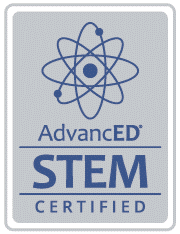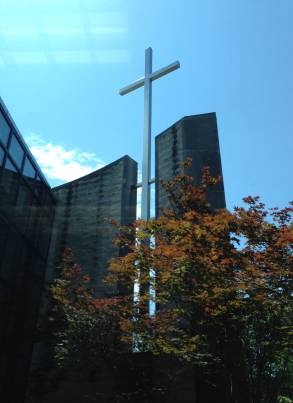Incorporating capstone projects to punctuate a course contribute an added benefit of flexibility and agility for teachers and students. When Rockhurst High School went to an online learning model due to the worldwide pandemic, Mr. Paul Winkeler’s Astronomy students were able to stay engaged and continue their learning journey. While everyone was figuring out their new normal for the spring semester, Mr. Winkeler, Chair of the Science Department, also talked about how the course’s final project helped maintain high expectations and high standards for both him as the instructor and the students in the class.
"One of the things that I noticed the most was how 'into' this [the project] they were."
Project Summary
The video below is a brief summary of the project. There are also some documents for the project that Mr. Winkeler has gladly shared.
The document “Astronomy Final Project - NASA Mission Proposal” is the very first document he gives to his students. After introducing their final project in class, he asks them to read through the roles and then complete the last page. That last page is what he uses to put the groups together. There is a deliberate reason he puts each student into the group he is placed in.
“After I announce what the teams are, I immediately have them meet in class and give them an agenda. They need to complete the document “NASA Final Project - Preliminary Information”. They can’t start planning out their mission until they have a company name, the roles determined (which hopefully fall in line with where I expect them to), and the general idea of what the mission is going to be. This is submitted to me a few days later, I will then review it with the team. I ask that their company name is genuine (not something goofy) and that they all understand and accept their roles. In addition, I make sure that their mission concept is something plausible. I talk to each group about the limits of technology; they can use concepts that are in production with NASA, but they cannot use conceptual technology that is just someone’s far out idea.” - Mr. Winkeler
When completed, each team will submit one “Astronomy Finals Packet”. This is a hard copy that they turn in; usually the Project Manager (PM) will divide up the packet into individual pages that each team member completes. Also, the PM needs to design the “Mission Patch”, which is the logo demonstrating what their mission will embody.
In addition to the Final Packet, each team member is assessed on the powerpoint presentation they submit (it can be on any platform of technology they wish to use). They will use this PowerPoint during their verbal presentation (which is usually in the Pitch Space in the Learning Commons). Each team member receives a grade on their contribution during the verbal presentation, so there are three total grades handed out, each per team member.
In the end, Mr. Winkeler selects the mission that will “receive funding to move on to the production level”.
"The final project for the Astronomy class is deeply rooted in the entire class."
Project Roles
One aspect of Mr,. Winkeler’s design is the incorporation of student roles. This structure helps when it comes to students receiving individual grades and being held accountable for individual work. Sometimes it is hard for a teacher to give different grades to students in the same group; however, incorporating student roles assists in solving this dilemma.
Furthermore, project roles helped with keeping the students on track. During the 4th quarter of the pandemic, Rockhurst went entirely only asynchronously except for weekly Wednesday ‘check-in’ sessions. Mr. Winkeler utilized this format in the following way:
"This schedule was something I had to come up with in order for students to be successful during remote learning. It worked extremely well."
“I would reach out to PM’s on Monday and see if their teams needed any guidance. I would remind them that I was available on Tuesday if they needed me. Most did. On Tuesday most teams would check in with individual questions via Google Meet. During our Wednesday online class period I would address the entire class, remind them of upcoming deadlines, make announcements, etc. Really the importance of Wednesday was to guide the teams away from pitfalls, laying the groundwork for success. Thursday was when I had office hours; I would meet with every team for at least 20 minutes. I had a schedule and the teams would pop in and out when their reserved time came up. This schedule was something I had to come up with in order for the students to be successful during remote learning. It worked extremely well.” - Mr. Winkeler
"If you truly want to unlock a student's potential, then group projects are a big part of that."
"They all have to really work together. At the same time, they each get their own individual grade."
Learning Evidence
In the past, I’ve heard Mr. Winkeler share critical insights about the distinction between high integrity learning projects and what he affectionately calls, “edu-tainment”. So I asked him a question along those lines: “What’s the evidence for learning?”
"I tell students that if they want to go to Titan, then they will be expected to be the expert in the room when it comes to Titan."
"One of the big questions is, "Why?" Tell me what got you into this and why you want to go to Neptune, or whereever it is."
Advice for other educators
If you are considering incorporating a project into your course, then listen to Mr. Winkeler’s advice on how to proceed.
"List out as much as you can and post it."
If you are interested in seeing the results of the project, then watch the student videos HERE.




Comments